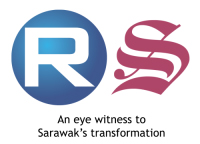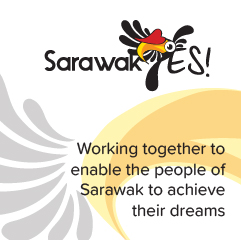In this digital age, where information and technology dominates almost every aspect of everyday life, keeping abreast with the latest trends and evolution in technology is guaranteed to be a competitive advantage.
Websites play an important role especially for government agencies because fundamentally, it helps to inform the public, as well as other government agencies about their presence, as well as their field of expertise which they can offer as part of their service.
However, although websites are a vital tool for the dissemination of information, websites too, need to be updated and maintained from time to time in order that it is kept relevant and functional at the same time.
Websites are important because they meet certain objectives in context to government departments and agencies. These objectives are:
- Single Entry Point – Simplifying the navigation of and search for information and online services
- Facilitate C2G, B2G, G2G & NC2G – Facilitating delivery of government services through a knowledge of proper procedure
- Single Information Source – single shared platform for delivery of government-originating information and news
- Communication – platform for public and government agencies to communicate electronically
- Find Forms and Services – Convenience in a single point to locate downloadable forms and online services
- Deliver Online Services – shared platform for interactive and transactional online services
Trends in effective website development is divided into 7 different criteria and they are, website design, browser, navigation, colours and graphics, multimedia, order of contents, and finally additional functions.
Website Design
In this context, the website simply needs to be attractive, with consistent header and logo placements, as well as having adequate information within the site title such as the name of the agency or department, section, and the name of the website.
Elements such as texts, graphics, and empty spaces are balanced; having the right contrast; coupled with the right consistency in the banners and menu, as well as being attractive and dynamic, with loading times that are less that 10 seconds.
Other aspects include the page footer which should incorporate the copyright, updates, and contact address. Finally, the website itself must have a core concept or theme.
Browser
Browser compatibility plays an important role because this is where all the visual elements are expressed and where functionality of a website is measured. Therefore, the website must be tested and made compatible with at least 4 browsers such as Internet Explorer (6+), Firefox (3+), Opera (9+), and Safari. In certain cases, websites can be tested for compatibility with up to 7 browsers but that is entirely optional.
Navigation
One of the key factors in a good website is the efficiency and effectiveness in terms of navigation. Most visitors would prefer a user friendly website which is convenient; compared to a complex website, full of unnecessary steps and procedures.
Therefore to add to the efficiency and effectiveness of navigation, some elements such as the main menu has to be clear and consistent as possible. In addition to having navigation aids such as site maps, skip navigation link, or breadcrumbs; and make sure that all navigation links are functional. Nothing could be worse than broken links which are usually the cause of frustration among information seekers.
Colours and Graphics
The aesthetic values of a website such as colour usage and graphics is what attracts the attention of visitors. However, it must be balanced and not overdone.
Background colours and texts must have different colours and both are clearly distinguishable by having the right contrast. Also, bear in mind to use a maximum of 3 to 4 colours only. Colours and graphics are used to attract and not to cause distraction to visitors of the website.
It is also important to ensure that each graphic element has their specific purpose and if there are any animations present, ensure that they are not too distracting and that they do not contribute to the increase of loading times.
Multimedia
As with graphics, any audio-visual and flash elements must have a purpose and that they are supposed to increase the attractiveness of the website and not a source of distraction towards visitors.
Ensure that each audio or video contains captions for reference, as well information on downloading times; in addition to having links to each media plug-ins.
Order of Contents
This mostly concern typographical elements such as fonts. By default, the most commonly used fonts are Arial or Times New Roman because these fonts are easily read, as well as more standardized compared to others. Font sizes and colours too must be consistent and does not interfere with other elements within the webpage.
In terms of contents, ensure that all information contained is useful and informative, as well as having consistency throughout. Also, it is important that clicks leading to specific information are lessened, which means that they are easily located; dates has to be accurate and ensure that the content does not include outdated information.
Finally, make sure that there are no typographical errors present, as well as using standard colours for links such as blue or deep maroon.
Additional Functions
No matter how attractive and appealing a website is, if the website is incapable of conveying information to visitors, then the website is rendered useless. Therefore it is important that the website is equipped with additional functions such as navigational aids, alternative texts for images and videos to explain its contents. Certain websites are equipped with voice recognition system especially for the blind so that they can access the website with ease.
Optional choices for languages are also beneficial especially for foreign visitors. But ensure that there is a disclaimer which states that translations to other foreign languages other than the core languages used may not be 100% accurate and that it recommends the use of either English or Bahasa Malaysia.
This topic was touched upon by Anis Suhailis Binti Abdul Kadir, an Information Technology Officer of the Website Management Section of the E-Government Management Development Division at the Malaysian Administrative Modernisation and Management Planning Unit (MAMPU), during the 2009 Government Agencies ICT Briefing for the State of Sarawak, which was held in Kuching, from the 17th to 19th of August 2009; conducted and organized by the Information and Communication Technology (ICT) Unit.





